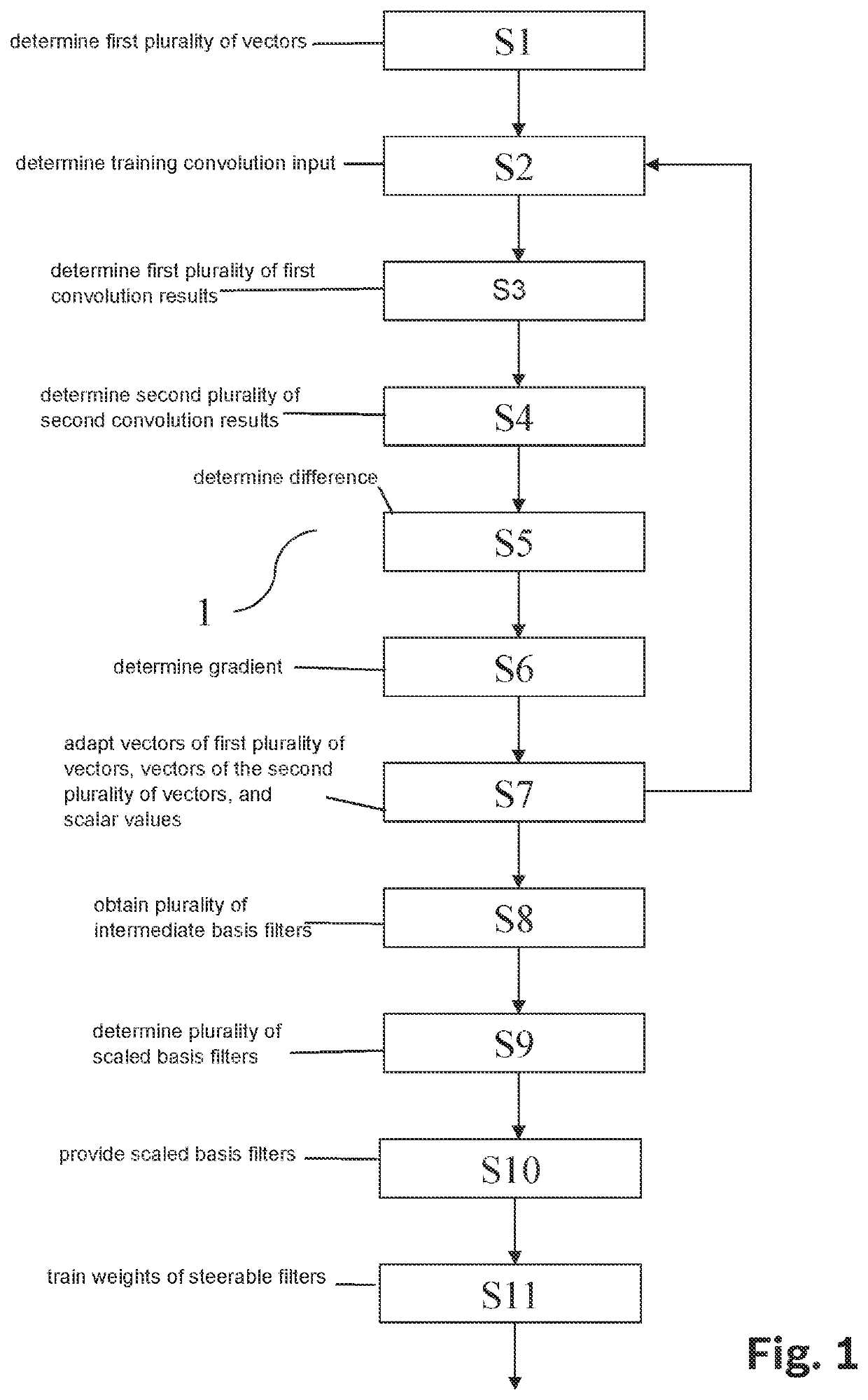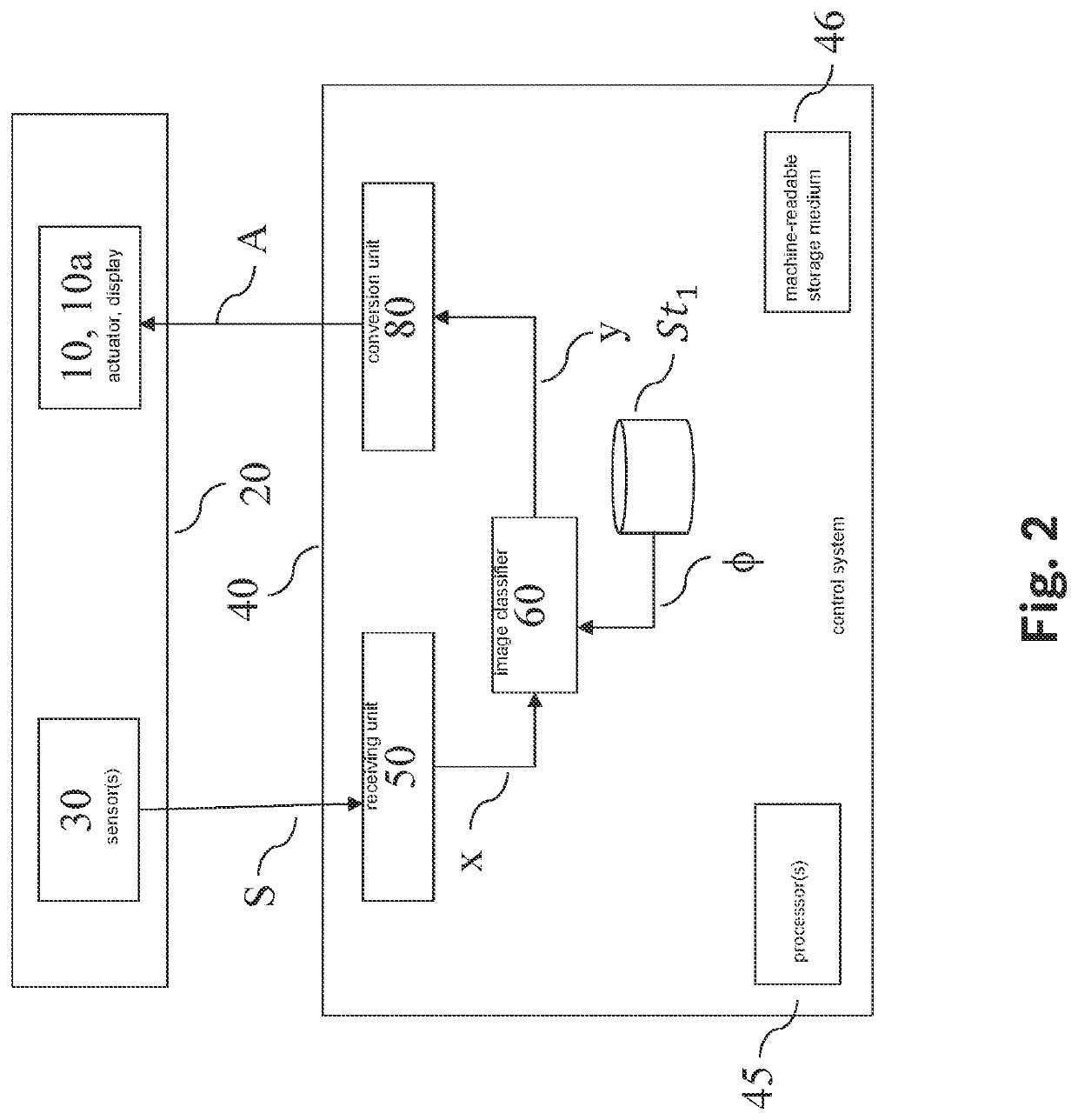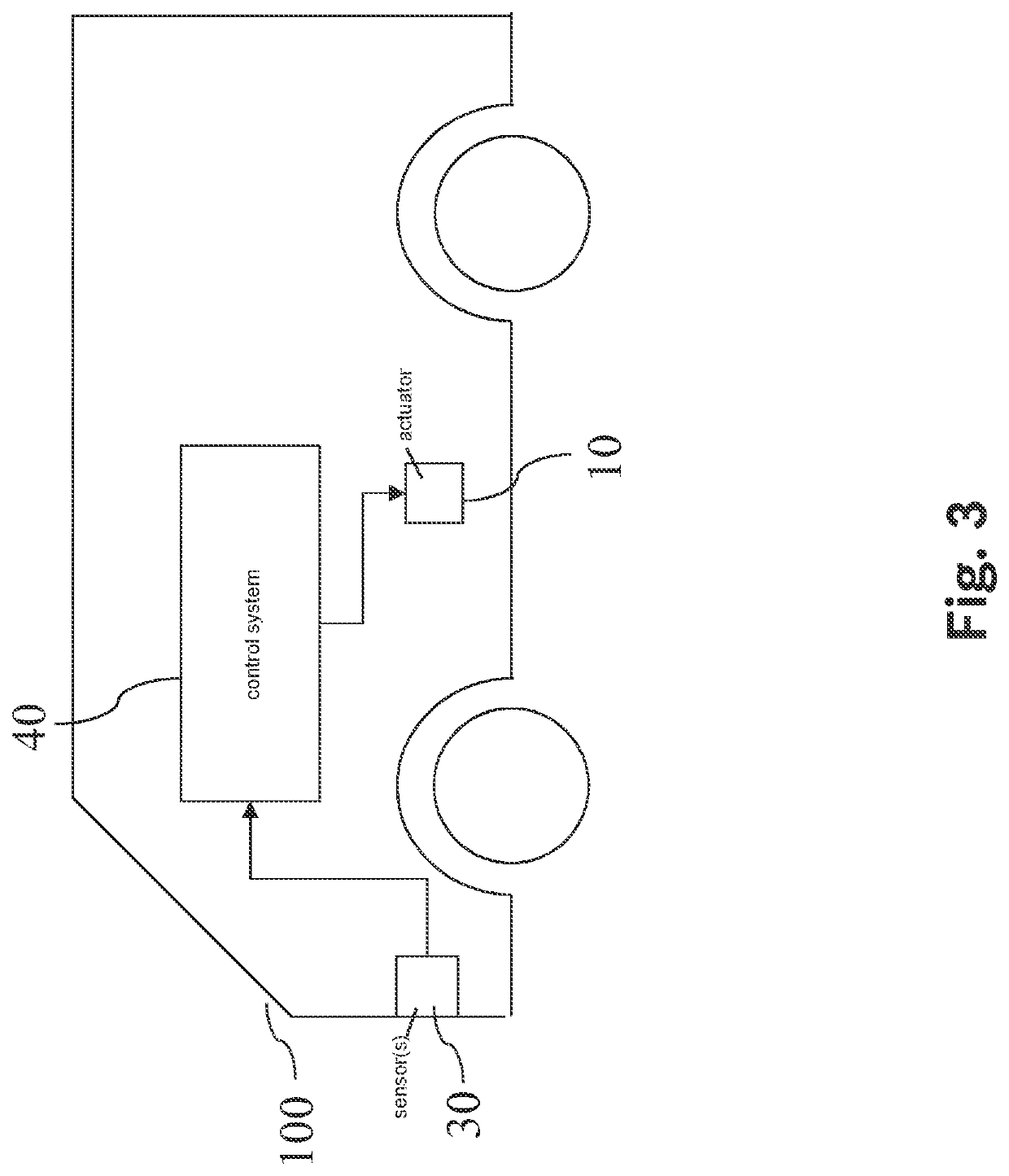Device and method for training a scale-equivariant convolutional neural network
a convolutional neural network and scale-equivariant technology, applied in the field of training a scale-equivariant convolutional neural network, can solve the problem that the convolutional neural network does not have embedded mechanisms to handle other types of transformation, such as scal
- Summary
- Abstract
- Description
- Claims
- Application Information
AI Technical Summary
Benefits of technology
Problems solved by technology
Method used
Image
Examples
Embodiment Construction
[0085]Shown in FIG. 1 is a flowchart of an example embodiment of a method (1) for training a scale-equivariant convolutional neural network. The scale-equivariant convolutional neural network is configured to accept a camera image as input and provide an output signal characterizing a classification of the camera image. In the following, the scale-equivariant neural network will simply be referred to as image classifier. The image classifier comprises a convolutional layer, which in turn comprises a predefined amount of steerable filters, wherein the steerable filters are of a same height, width and depth. Training the image classifier comprises training a plurality of basis filters of the steerable filters as well as training a plurality of weights of the steerable filters. The basis filters are trained by training a plurality of intermediate basis filters and scaling each intermediate basis filter to a scale from a plurality of predefined scales.
[0086]In the embodiment, the convol...
PUM
 Login to View More
Login to View More Abstract
Description
Claims
Application Information
 Login to View More
Login to View More - R&D
- Intellectual Property
- Life Sciences
- Materials
- Tech Scout
- Unparalleled Data Quality
- Higher Quality Content
- 60% Fewer Hallucinations
Browse by: Latest US Patents, China's latest patents, Technical Efficacy Thesaurus, Application Domain, Technology Topic, Popular Technical Reports.
© 2025 PatSnap. All rights reserved.Legal|Privacy policy|Modern Slavery Act Transparency Statement|Sitemap|About US| Contact US: help@patsnap.com



